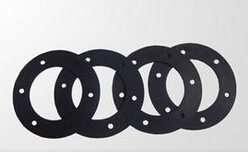Natural rubber is made of latex, and a part of the non-rubber component contained in the latex remains in the solid natural rubber. Generally, natural rubber contains 92%-95% of rubber hydrocarbons, while non-rubber hydrocarbons account for 5%-8%. Due to different manufacturing methods, different production areas and even different rubber seasons, the proportion of these ingredients may vary, but they are basically within the range.
Protein can promote the vulcanization of rubber and delay aging. On the other hand, the protein has strong water absorption, which can cause the rubber to absorb moisture and mold, and the insulation is degraded, and the protein has the disadvantage of increasing heat build-up.

Acetone extracts are high-grade fatty acids and sterols, some of which act as natural antioxidants and accelerators, and others which help the powdered compounding agent disperse during the mixing process and soften the raw rubber.
The ash mainly contains salts such as magnesium phosphate and calcium phosphate, and has a small amount of metal compounds such as copper, manganese, iron, etc., because these variable metal ions can promote rubber aging, so their content should be controlled.
The moisture in the dry glue does not exceed 1%, and it can be volatilized during processing. However, when the moisture content is too much, it will not only cause mildew during the storage of the raw rubber, but also affect the processing of the rubber, such as the compounding agent during mixing. Group; bubbles are easily generated during calendering and extrusion, and bubbles or sponges are formed during the vulcanization process.